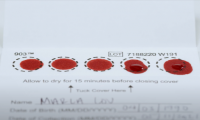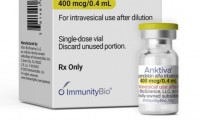-
New Method Offers Sustainable Approach to Universal Metabolic Cancer Diagnosis
- Source: drugdu
- 166
- April 26, 2024
-
Blood Test Accurately Predicts Lung Cancer Risk and Reduces Need for Scans
- Source: drugdu
- 103
- April 26, 2024
-
FDA Drug Approval Marks a New Day for Treating Pediatric Brain Cancer
- Source: drugdu
- 78
- April 26, 2024
-
FDA Approves Amneal’s Naloxone Hydrochloride Nasal Spray as an OTC Treatment for Opioid Overdose
- Source: drugdu
- 73
- April 26, 2024
-
Investors anticipate “bounce-back” in European private investment
- Source: drugdu
- 68
- April 26, 2024
-
Spatial Tissue Analysis Identifies Patterns Associated With Ovarian Cancer Relapse
- Source: drugdu
- 78
- April 25, 2024
-
Unique Autoantibody Signature to Help Diagnose Multiple Sclerosis Years before Symptom Onset
- Source: drugdu
- 81
- April 25, 2024
-
FDA Approves Immunotherapy That Can Spare Bladder Cancer Patients From Radical Surgery
- Source: drugdu
- 76
- April 25, 2024
-
FDA Approves Novartis’ Lutathera for Pediatric Patients with Gastroenteropancreatic Neuroendocrine Tumors
- Source: drugdu
- 128
- April 25, 2024
-
Boehringer Ingelheim and Ochre Bio partner on liver disease in deal worth over $1bn
- Source: drugdu
- 90
- April 25, 2024
your submission has already been received.
OK
Subscribe
Please enter a valid Email address!
Submit
The most relevant industry news & insight will be sent to you every two weeks.













